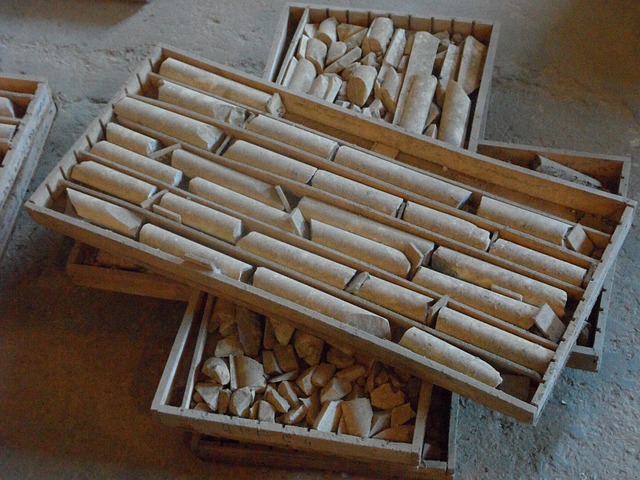Cottage Grove, established in 1847, is a vibrant hub with a diverse history shaped by its strategic location. Initially driven by the Oregon Trail and abundant natural resources, its growth included boomtown mining in the 19th century, followed by logging and railroad expansion. Today, Cottage Grove preserves its past through historical landmarks showcasing mining sites, logging remnants, and the legacy of railroading, reflecting a rich cultural evolution from trail stop to prosperous community.
Cottage Grove, nestled in the heart of Oregon, is a city with a rich and diverse past. From its peaceful founding in the mid-19th century to its rise as a bustling hub, Cottage Grove has evolved through various stages. This article delves into the key milestones that shaped the city, including its mining history, dominance by the logging industry, railroad expansion, and cultural evolution marked by significant historical landmarks. Unraveling these aspects provides a comprehensive glimpse into Cottage Grove’s journey from humble beginnings to a vibrant community.
- Cottage Grove Founding History: A Peaceful Beginning
- Cottage Grove Mining Past: Uncovering the Rich Veins
- Logging Industry Dominance: Shaping the City's Identity
- Railroad Expansion and Growth: Connecting Cottage Grove
- Historical Landmarks and Cultural Evolution: Preserving Cottage Grove's Legacy
Cottage Grove Founding History: A Peaceful Beginning

Cottage Grove’s founding story began in the mid-19th century when a group of pioneers seeking a peaceful haven along the scenic Coast Range decided to establish a community. The area, then known for its abundant natural resources, attracted miners, loggers, and farmers who envisioned a prosperous future. With the arrival of the railroad, Cottage Grove experienced rapid growth and became a vital stop on the Oregon Trail, fostering a diverse cultural evolution.
The town’s early history is marked by the thriving mining industry, which drew prospectors seeking fortunes in the region’s rich mineral deposits. As logging became a significant sector, towering trees were felled to fuel both local industries and export markets. The railroad expansion played a pivotal role in transporting goods and people, further solidifying Cottage Grove’s position as a bustling hub along the Oregon Trail. These historical milestones laid the foundation for the town’s vibrant cultural landscape, shaping its identity as a peaceful haven with a dynamic past.
Cottage Grove Mining Past: Uncovering the Rich Veins

Cottage Grove’s founding roots lie in its rich natural resources, particularly during the Oregon Trail era. The city’s early history is intertwined with mining endeavors, as prospectors were drawn to the area by promises of valuable minerals. The region’s geological makeup revealed rich veins of coal, gold, and silver, sparking a boom in mining activities that shaped the town’s development. This period left an indelible mark on Cottage Grove’s identity, with historical landmarks like old mineshafts and remnants of bygone days still visible today, offering a glimpse into its mining past.
The logging industry also played a pivotal role in the community’s growth. With the expansion of railroads, Cottage Grove experienced a surge in accessibility, which further fueled its economic prosperity. The railroad connected the town to broader markets, enabling the efficient transportation of timber and other goods. This period saw the transformation of Cottage Grove from a small mining outpost into a bustling hub, where diverse cultural influences blended, contributing to its unique historical tapestry.
Logging Industry Dominance: Shaping the City's Identity

Cottage Grove’s identity is deeply intertwined with its history as a pivotal stop along the Oregon Trail and subsequent logging industry dominance. Founded in 1846, the city played a crucial role in early settlement and migration to the Pacific Northwest. Initially driven by mining interests, the discovery of gold in nearby areas attracted pioneers seeking fortune. However, it was the advent of railroad expansion in the late 19th century that truly transformed Cottage Grove. The arrival of the train connected the region to broader markets, facilitating the transportation of logs from vast forests that once characterized the area.
This logging industry boom left an indelible mark on the city’s cultural evolution and historical landmarks. Massive sawmills sprang up along the riverbanks, powering a bustling economy centered around timber extraction. The influx of workers led to the establishment of diverse communities, contributing to a rich tapestry of Cottage Grove’s heritage. Today, these roots are celebrated through various historical sites and museums that showcase the city’s transformation from a humble trail stop to a vibrant hub shaped by its logging past.
Railroad Expansion and Growth: Connecting Cottage Grove

Cottage Grove’s journey from a humble founding in the 1840s to becoming an integral part of Oregon’s history is closely tied to its strategic location and access to transportation networks. The early years saw the establishment of a mining and logging hub, fueled by the rich natural resources surrounding the area. However, it was the railroad expansion that truly revolutionized the town, connecting Cottage Grove to the broader state and national networks. This pivotal moment in the 19th century facilitated the flow of goods, people, and ideas, fostering economic growth and cultural exchange.
The railroad’s arrival not only brought prosperity but also left an indelible mark on the town’s landscape and identity. Historical landmarks, such as the vintage train stations and well-preserved rail infrastructure, stand as reminders of this transformative era. Cottage Grove’s cultural evolution mirrored its economic development, with diverse communities contributing to a vibrant social fabric. This period witnessed the migration of folks from various backgrounds, each bringing their unique traditions, further enriching the tapestry that is Cottage Grove.
Historical Landmarks and Cultural Evolution: Preserving Cottage Grove's Legacy

Cottage Grove’s rich history is a tapestry woven with threads of pioneering spirit and economic prosperity. Founded in 1847, it stands as one of Oregon’s oldest settlements, bearing witness to the state’s transformation from untamed wilderness to thriving metropolis. The town’s founding was intrinsically linked to the Oregon Trail, attracting pioneers seeking fertile land and new opportunities.
Beyond its early beginnings, Cottage Grove has left an indelible mark through various industries. A hub for mining during the late 19th century, it later became a center for logging and sawmilling, fueled by the region’s abundant natural resources. The railroad expansion further solidified the town’s importance, connecting it to broader economic networks and fostering cultural evolution. Today, Cottage Grove boasts several historical landmarks that preserve this legacy, offering insights into its diverse past from mining sites to remnants of its logging industry, each telling a unique story of resilience and progress.
